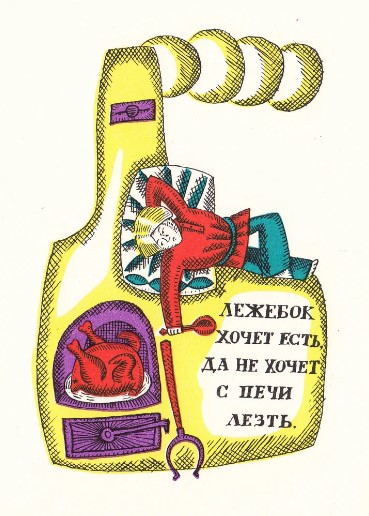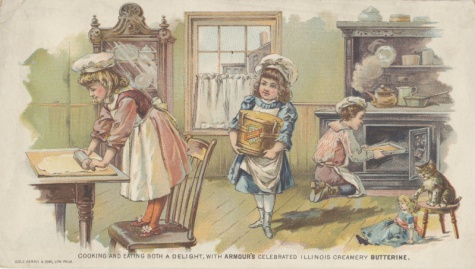 It’s already November, and simply thinking about Thanksgiving and Christmas is enough to expand my waistline by several inches. Where did the year go? Blink your eyes and Christmas will be here. Yes, Christmas is coming; the goose is getting fat…
It’s already November, and simply thinking about Thanksgiving and Christmas is enough to expand my waistline by several inches. Where did the year go? Blink your eyes and Christmas will be here. Yes, Christmas is coming; the goose is getting fat…
This past year, while perusing old newspapers, I frequently stumbled upon early-twentieth-century food columns written by the exotic- and mysterious-sounding Madame Jule De Ryther (1845-1915). Apart from conveying her opinions on all things culinary, she touched on attitudes and social mores of the day, often with blunt humor, and even covered such topics as bacteriology and the importance of clean dishes and properly washed milk bottles1.
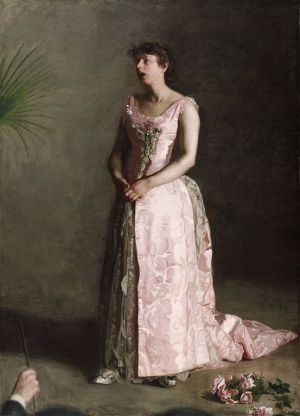
The Concert Singer by Thomas Eakins, 1892. Depicted artist: Weda Cook (Credit: Wikimedia Commons/Expired copyright)
Over time, I quickly grew to admire Madame De Ryther, a ‘Martha Stewart’ of her time, and on further research, I found even more reason to place her on a mental pedestal: before her food career began, she had been a highly regarded soprano, performing in prestigious concerts around the United States. I assume that’s where the “Madame” came from, and while her first name may have been Jule, I suspect “De Ryther” was a stage name. I never found evidence of a marriage.
In her younger years and into middle age, Madame De Ryther was enjoying a busy musical career. She sang regularly at the Church of Divine Paternity and the Anthon Memorial Church (today known as All Souls Episcopal Church) in NYC.

Henryk Wieniawski, before 1870 (Wikimedia Commons)
She had been the celebrated soprano of the Wieniawski Troupe during its 1873 concerts in California. At that time, Henryk Wieniawski, a Polish violinist and composer, was recognized as being one of the world’s greatest violinists, having been the solo violinist of the Emperor of Russia2.

New York Herald, May 30, 1873 (Credit: fultonhistory.com)
On August 23, 1874, she sang the Star Spangled Banner at a concert benefiting the Women’s Training School in Long Island, a school supported by Mrs. Ulysses S. Grant. President Grant was in attendance for the event3.

From The Letters of Sidney Lanier (Cambridge University Press, 1899)
The 1899 book Letters of Sidney Lanier, which contains correspondence of the famous 19th-century American musician, poet, and author (d. 1881), includes a January 9, 1875, letter describing an upcoming concert in which Mme. De Ryther was to appear: “Our second concert comes off to night and we are to play such beautiful music as makes my heart tremble even to think of. First comes Beethoven’s Second Symphony, one written before the dreadful deafness had come upon his ears and pierced into his heart. […] Then Mme De Ryther, a lady in form and manner and stage appearance much like our dear departed G_______, is to sing with a glorious contralto voice a noble aria, Handel’s little known opera “Rinaldo.”

New York Dramatic Mirror (Credit: FultonHistory dot com)
During its 1879-1880 run at the Fifth Avenue Theater in New York, Gilbert & Sullivan’s comic opera “Trial by Jury” included the talents of Mme De Ryther who took over the role of Little Buttercup, “a manifest improvement” over the previous performer, according to the New York Dramatic Mirror.

Scene in the Arctic by William Bradford, cir. 1880, De Young Museum, San Francisco (Wikimedia Commons-Public domain in US)
And, in 1886 she performed in a traveling lecture series presented by prominent painter, photographer, and explorer William Bradford (1823-1892) whose seven voyages to the Arctic in the 1860s, accompanied by other prominent photographers, resulted in dozens of images—“the only complete collection of views in existence of the Arctic Regions”4. These images, which provided the basis for many of Bradford’s subsequent paintings, were projected on a large screen. As the images unfolded during the lectures, Jule would sing Eskimo and old Norse songs and hymns “in the native tongue”; her “wonderfully sympathetic voice” was “heard to advantage in this weird music”5. (To view a gallery of Bradford’s paintings, click here.)
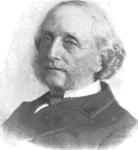
William Bradford, painter, explorer, photographer (Image from Wikimedia)
I’m not sure when Madame De Ryther’s singing career came to a close, but it was likely sometime in the 1890s. The last mention I found made of her musical talent was in The Printing World (pub. 1891, p. 298):
Here is a specimen of musical criticism in California. The San Jose Mercury, in an article on the Wienawski troupe, says of Madame De Ryther: “She is marvellous on the low notes, and she sings with a pathos calculated to lift a sensitive reporter right out of his boots.”
Her first newspaper job was as a society reporter with the New York Recorder. Later she worked for other papers, including the New York Herald and the New York Times. Her food columns started to appear in the New York Evening Mail and the New York Press in the early 1900s6.
Jule was born in Little Falls, New York. Her father Albert W. Churchill was the proprietor of the Benton House (later known as Garvan House) in Little Falls. He managed a number of hotels in Rome NY from 1858-1870: the American Hotel, Stanwix Hall, the Railroad House, and Curry’s Eating House7. Her mother was Susan E. Churchill. Jule’s early education was in Little Falls; she later moved to NYC to study vocal music under Madame Seguin8. Jule had four siblings: Fred B. Churchill; Emma Churchill Belden; Frances Churchill Waters; and Cornelia Churchill Russ. She died of pneumonia at age 69 on March 14, 1915, at the Hotel Vanderbilt in NYC9. Funeral services were held two days later at the Church of the Transfiguration in NYC, and she was buried in the Churchill family plot in Little Falls10. When I discovered that last bit of information, I created an entry for her on Find a Grave, and did my best to link the Churchill family together. (Update 5/15/20: Bill Simpson of Charlotte, NC, advised me that he found two more morsels of information about her: “ONE… it seems she was being, or was evicted from her home of 30 years… just before her death. TWO… her brother, a NYC lawyer, in 1885, committed suicide under a strange set of circumstances.”)
 Using the fultonhistory.com website, I have been able to accumulate numerous Madame De Ryther’s columns, many of which were likely read by our ancestors who lived at that time, so, in her memory, between now and Christmas, I am going to publish “Madame De Ryther Monday” posts (on Mondays, of course!), with or without commentary on my part. I may actually attempt some of her creations, and if I do, I will surely tell you about it. Perhaps, by Christmas you will have as much admiration as I do for this wonder woman of yesteryear!
Using the fultonhistory.com website, I have been able to accumulate numerous Madame De Ryther’s columns, many of which were likely read by our ancestors who lived at that time, so, in her memory, between now and Christmas, I am going to publish “Madame De Ryther Monday” posts (on Mondays, of course!), with or without commentary on my part. I may actually attempt some of her creations, and if I do, I will surely tell you about it. Perhaps, by Christmas you will have as much admiration as I do for this wonder woman of yesteryear!
Here is the first article, from October 11, 1903: “Madame De Ryther’s Receipts for Two Excellent One-Dish Dinners”
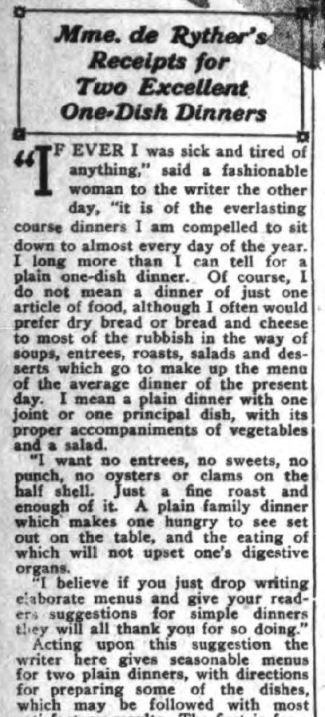
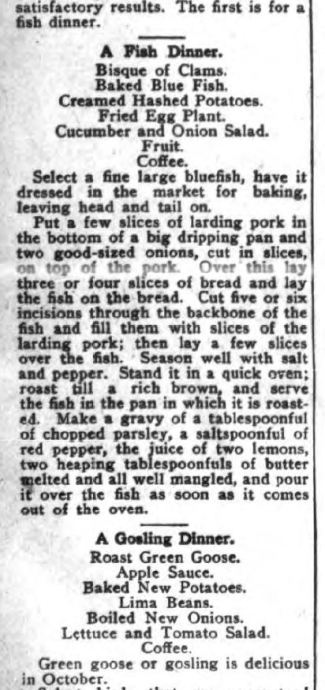
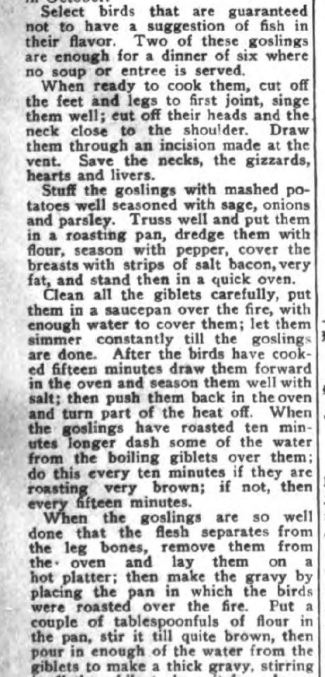
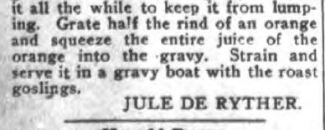
**************************************************************************************
END NOTES:
1. “The Subject of Clean Dishes”, The Springfield Union, November 20, 1913
2. Reported in the Sacramento Daily Union, July 1, 1873
3. Reported in the New York Herald, August 24, 1873
4., 5. “The Bradford Recitals,” Elkhart, Indiana, Daily Review, October 19, 1886
6. Jule de Ryther Obituary, Utica Herald Dispatch, March 15, 1915
7. William Churchill obituary, Rome Citizen (NY), January 23, 1885
8. Jule de Ryther Obituary, Utica Herald Dispatch, March 15, 1915
9. Jule de Ryther New York Times Obituary, March 15, 1915
10. Jule de Ryther funeral announcement, Rome NY Daily Sentinel, March 16, 1915












































